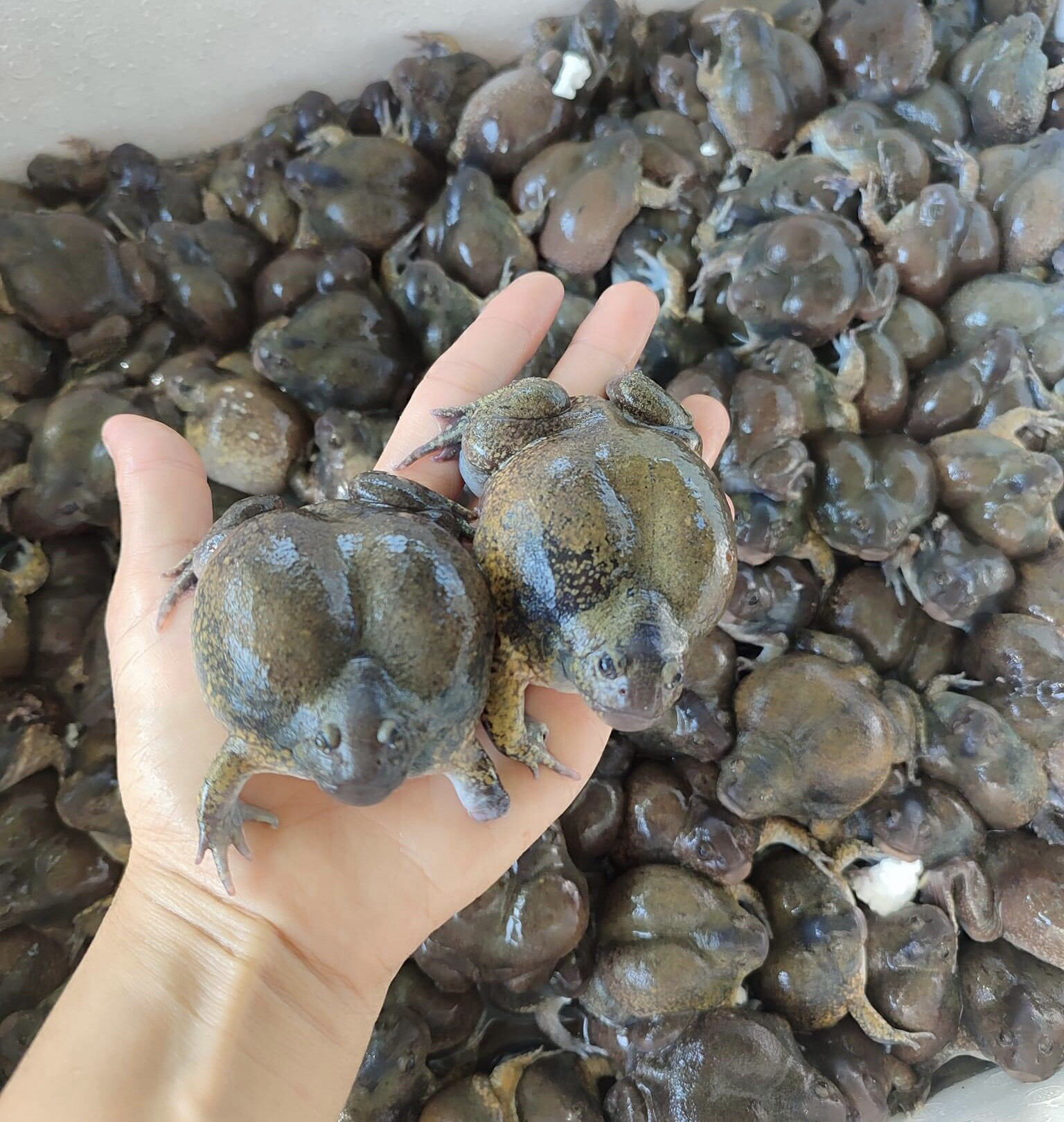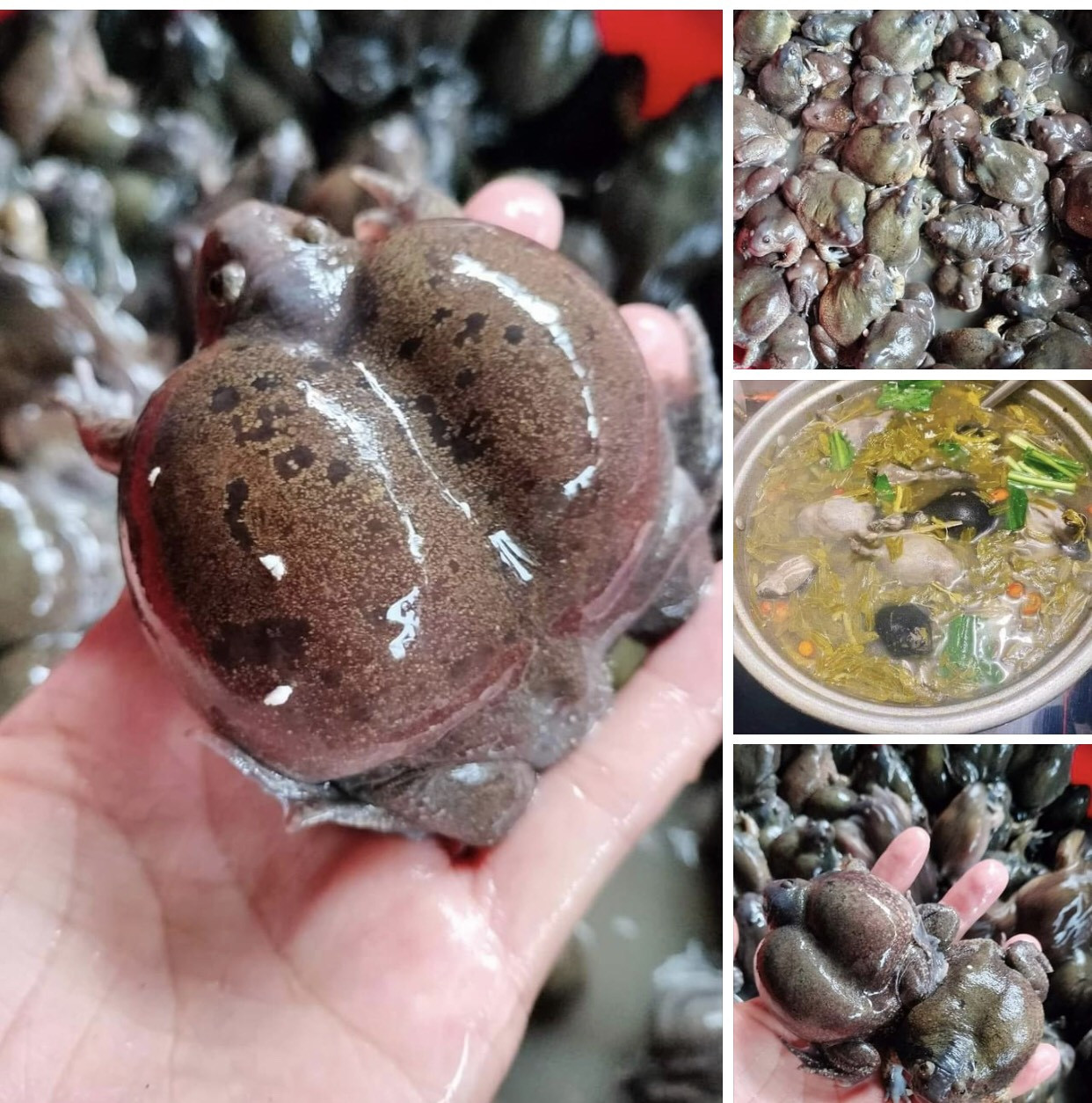
The frog, characterized by its large belly, black skin, and unusual shape, has recently appeared in online markets. Many people are intrigued and surprised to see these frogs being sold as food.
Traders describe the frog as a specialty from Ninh Thuan and Binh Thuan provinces, available only during a specific season each year. According to sellers, the frog can be prepared in various delicious dishes, including sour tamarind leaf soup, boiled, fried, grilled, or cooked in giang leaf hotpot.
Prices range from 200,000-280,000 VND per kilogram, with egg-bearing frogs priced higher at 300,000-320,000 VND per kilogram. Notably, sellers advise eating the frog whole. The preparation involves blanching the frog in boiling water, scrubbing it with salt to remove slime, and then cooking.
This frog has gained popularity on social networks. Despite its somewhat intimidating appearance, traders claim the meat is delicious and fatty. Since it is available for only one season each year, many people are eager to purchase it.
In Da Nang, Mr. Duc sells the frog for 260,000 VND per kilogram. He describes it as a rare specialty from Ninh Thuan and Binh Thuan, available for just 1-2 months each year, around May-June, during the first rain of the season. "The frog meat is sweet and fragrant, the bones are soft, and it is nutritious. As the frog season is almost over, customers must order in advance," he explains.
Ms. Nguyen Nhan, a seller in Ho Chi Minh City, has been selling frogs since early May, buying them from Ninh Thuan and Binh Thuan provinces. She sells them for 200,000 VND per kilogram, with egg-bearing types priced at 300,000 VND per kilogram. "The frog may look scary, but it's delicious. The meat is sweet, and the eggs are fatty," Ms. Nhan says, noting that most retail customers buy 1-2 kilograms at a time, while wholesale orders range from 20-40 kilograms. Due to high demand and the end of the frog season, she often sells out quickly.
Expert warnings

Dr. Pham Van The, a conservation researcher at Van Lang University, has raised concerns about the growing trend of eating frogs. The frog, scientifically known as Glyphoglossus molossus or the tongue frog, belongs to the Microhylidae family. This species has a disproportionate head-to-body ratio, with a small head and large body, leading to its nickname "balloon frog."
The frog's body is about 7 cm long, with rough skin, a gray-black back with light yellow spots, and a belly the color of chicken fat. These frogs reproduce during the rainy season, laying eggs in stagnant water puddles. During the dry season, they bury themselves in moist soil until the rainy season returns. Environmental destruction has put this species at risk, and it is listed as "Near Threatened" in the IUCN Red List.
Dr. Pham Van The emphasizes the frog's importance in the ecosystem and its symbolic value for regional biodiversity. He warns against the rising trend of consuming live frogs, which not only poses health risks due to parasitic infections but also threatens the species' survival.
"The frog is crucial for controlling insects and maintaining ecological balance. Its loss could lead to an increase in pests and a decline in other species," he says.
Dieu Thuy